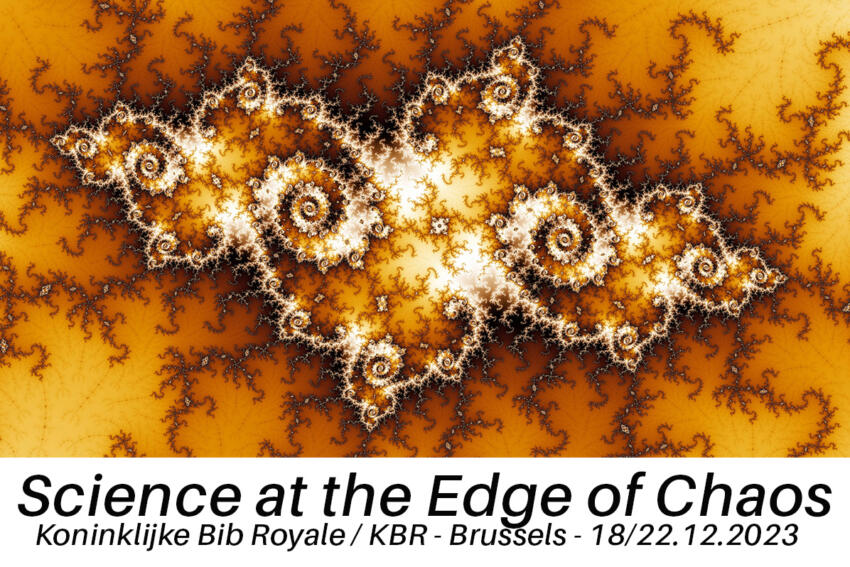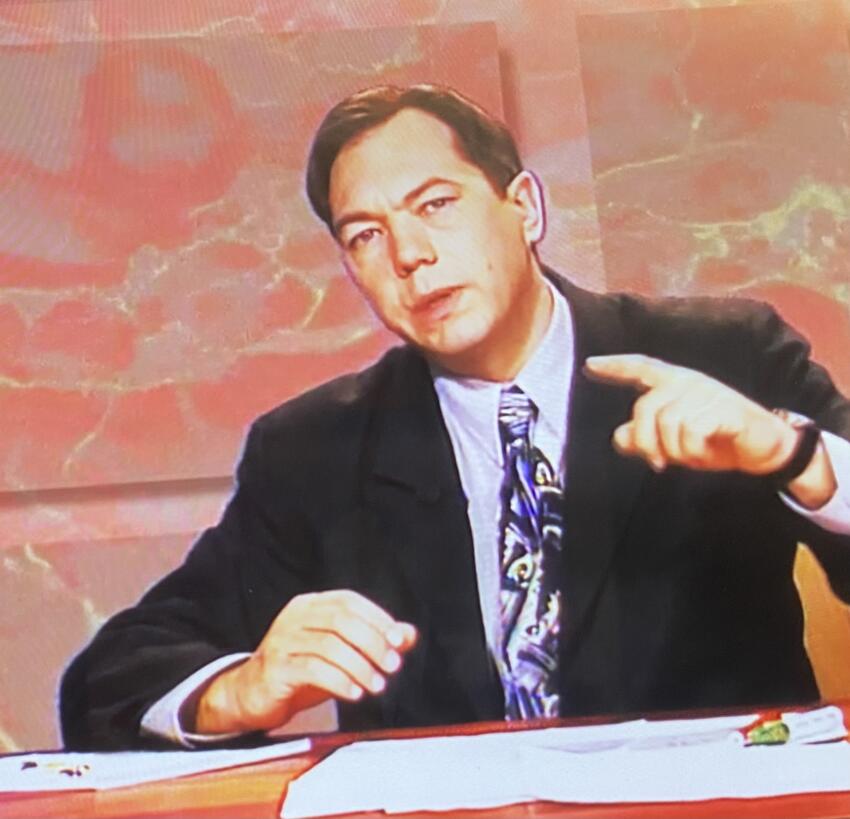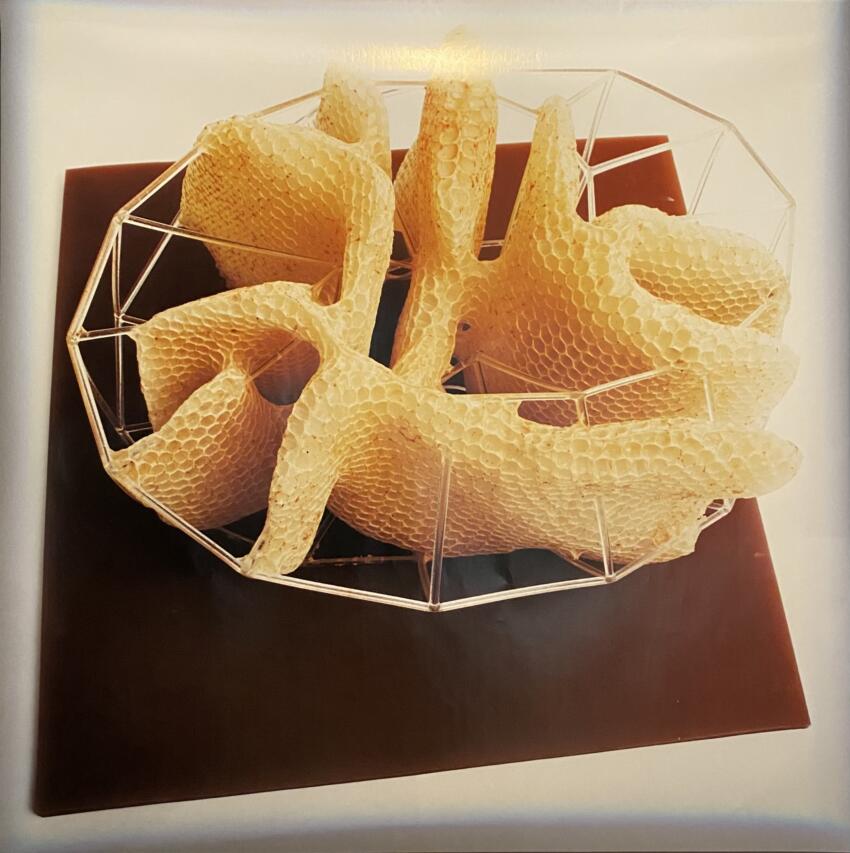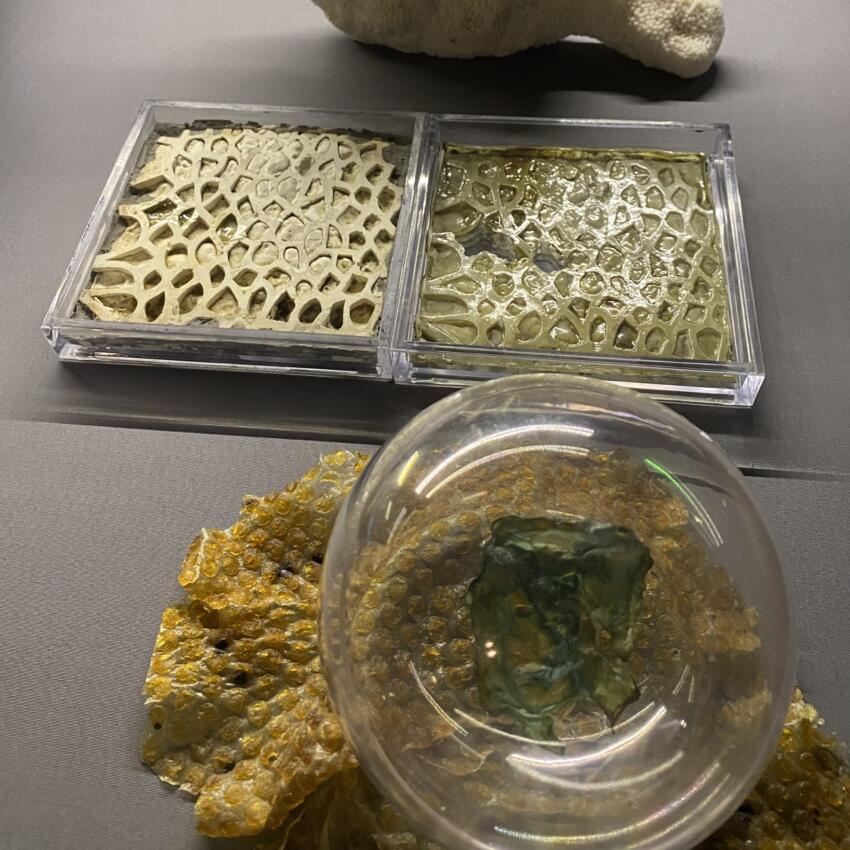In the 1980s and 1990s a new wind was blowing in many sciences, based on the realization that various complex phenomena in Nature can be understood by viewing them as self-organizing dynamical systems. Typical examples are tornados, meandering rivers, paths formed by ant colonies, chemical oscillations, patterns on a zebra skin, honeycombs in beehives, coordinated activities in neural networks in the brain, crashes in the stock market, and many more. A new science of complex systems was born coinciding with profound mathematical developments in fractal geometry, chaos theory and the study of large-scale networks.
muhai/art-science/science on the edge of chaos
This pop up exhibition shows videos of interviews, talks, and panels with the scientists who developed these original ideas and carried out some of the key experiments. They include Nobel laureates Christian de Duve, Manfred Eigen, Roger Penrose and Ilya Prigogine, as well as the mathematicians that founded chaos theory (Benoit Mandelbrot, Daniel Ruelle, Floris Takens, a.o.) and leaders in the application of self-organisation in physics, chemistry, biology, neuroscience, and economics. The exhibition also displays books and experimental objects, as well as art works from the ‘Wunderkammer’ of artist Anne Marie Maes. A second theme of the exhibition is how researchers at the forefront of Artificial Intelligence and Artificial Life were swept up by these ideas, leading to a renaissance of neural network research and highly dynamic, embodied robotic agents inspired by nature, called animats. To illustrate this research line, the exhibition includes various robots and a large number of videoclips on experiments carried out in the 90s to explore how intelligence can emerge from situated interaction.
To illustrate some of these investigations, such as on the solar system, the network structures of the brain, or the collective behavior of insects, the exhibition is expanded with top pieces from the collections of the Royal Library, including the first edition of Newton’s Principia, the observations of Copernicus, the writings of Laplace and Poincare on the predictability of celestial movements, the precious drawings of plants of 17th century botanists like Rembert Dodoens, and more.

SCIENCE ON THE EDGE OF CHAOS.
The AI Avant-Garde in the 1990s.
Curator: Luc Steels
Pop-up exhibition at the Royal Library (KBR)
Kunstberg – Mont des Arts 28, 1000 Brussel
Opening: 18 December 2023
Closing: 22 December 2023
The beauty of fractal structures and objects created by living systems through self-organization have for centuries been an important source of inspiration for artists. The illustrations we find in the earliest books on plants and animals are among the most remarkable and detailed drawings of these phenomena.
Also more recently, artists working on the borderlines between science and art have been making art works that mimic self-organizing processes in order to generate novel aesthetic forms or to make hidden natural behaviours and structures visible.
This exhibition features examples from the ‘Wunderkammer’ of artist Anne Marie Maes. The artworks are scattered throughout the exhibition and some more examples are shown in this section, focusing in particular on the collective behaviour of bees and the activities of bacteria while growing skins.

Luc Steels explains the notion of strange attractors with interventions by Daniel Ruelle on phase space diagrams, Michele Hénon on the Henon attractor and Poincaré sections, and Floris Takens on a topological view on chaos.

Collection of pollen grains. Objects, video and Scanning Electron Micrograph (SEM) prints.

A Moebius-strip was printed in 3D (transparent resin) and put in a beehive. The colony, in full expansion, started to built wax comb in the 3D structure.

History of Ideas. Scientists in the 16th and 17th century started to make careful animal drawings and catalogued species variation. Encyclopedie de Diderot et d’Alembert (From the archives of the KBR)

Cat’s Paw Coral, genus Pocillopora Eydouxi / Handmade snakeskin biotextile prints (algae) / Sphere with microbial skin inoculated with Lactobacillus plantarum / Bubble shaped biotextile from agar agar and green algae, handmade
In de jaren tachtig en negentig waaide er in veel wetenschappen een nieuwe wind, door complexe verschijnselen in de natuur te beschouwen als zelf-organiserende dynamische systemen. Typische voorbeelden hiervan zijn tornado’s, kronkelende rivieren, paden gevormd door mierenkolonies, chemische oscillaties, patronen op een zebrahuid, honingraten in bijenkorven, gecoördineerde activiteiten in neurale netwerken in de hersenen, crashes op de aandelenmarkt en nog veel meer. Een nieuwe wetenschap van complexe systemen werd geboren die samenviel met diepgaande wiskundige ontwikkelingen in de fractale geometrie, de chaostheorie en de studie van grootschalige netwerken.
Deze pop-uptentoonstelling toont video’s van interviews, lezingen en panels met de wetenschappers die deze originele ideeën ontwikkelden en enkele van de belangrijkste experimenten uitvoerden. Onder hen bevinden zich Nobelprijswinnaars Christian de Duve, Manfred Eigen, Roger Penrose en Ilya Prigogine, evenals de wiskundigen die de chaostheorie hebben bedacht en uitgewerkt (zoals Benoit Mandelbrot, Daniel Ruelle, Floris Takens, e.a.). Er zijn ook gesprekken met leidende onderzoekers in de toepassing van zelforganisatie in de natuurkunde, scheikunde, biologie, neurowetenschappen en economie. De tentoonstelling toont verder sleutelboeken over complexe systemen uit die periode en ook kunstwerken in de vorm van natuurlijke of artificiële objecten uit de ‘Wonderkamer’ van kunstenaar Anne Marie Maes.
Een tweede thema van de tentoonstelling is hoe onderzoekers in de voorhoede van kunstmatige intelligentie en kunstmatig leven door deze ideeën werden meegesleept, wat leidde tot een renaissance van onderzoek naar neurale netwerken en de ontwikkeling van animats, dynamische, belichaamde robotagenten geïnspireerd door de natuur. Hierover zien we gesprekken met Francisco Varela, Chris Langton, Stuart Kauffman, Rodney Brooks, e.a. Ter illustratie zijn er ook robots te zien gemaakt in de jaren negentig, zoals LEGO vehicles en AIBO robots, alsook videoclips met deze robots in actie.
Ten slotte bevat de tentoonstelling ook klassieke boeken uit de collectie van de Koninklijke Bibliotheek die over dezelfde onderwerpen gaan: het zonnestelsel, de netwerkstructuren van de hersenen, of het collectieve gedrag van insecten. De tentoonstelling bevat topstukken zoals de eerste editie van Newton’s Principia, de observaties van Copernicus over de planeten, de geschriften van Laplace en Poincaré over de voorspelbaarheid van hemelbewegingen, de kostbare tekeningen van planten van 16e-eeuwse plantkundigen als Rembert Dodoens, en meer.
